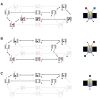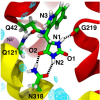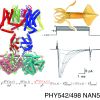
Principles of Transporter Function
Transport of ions and small molecules across the cell membrane against electrochemical gradients is catalyzed by integral membrane proteins that use a source of free energy to drive the energetically uphill flux of the transported substrate. Here we review general principles that apply to most secondary active transporters, namely energy coupling through kinetic cycles and the thermodynamic driving forces, inverted repeat symmetry as a means to generate bi-stable systems that can function according to the alternating access model, and understanding transporters as gated pores.




